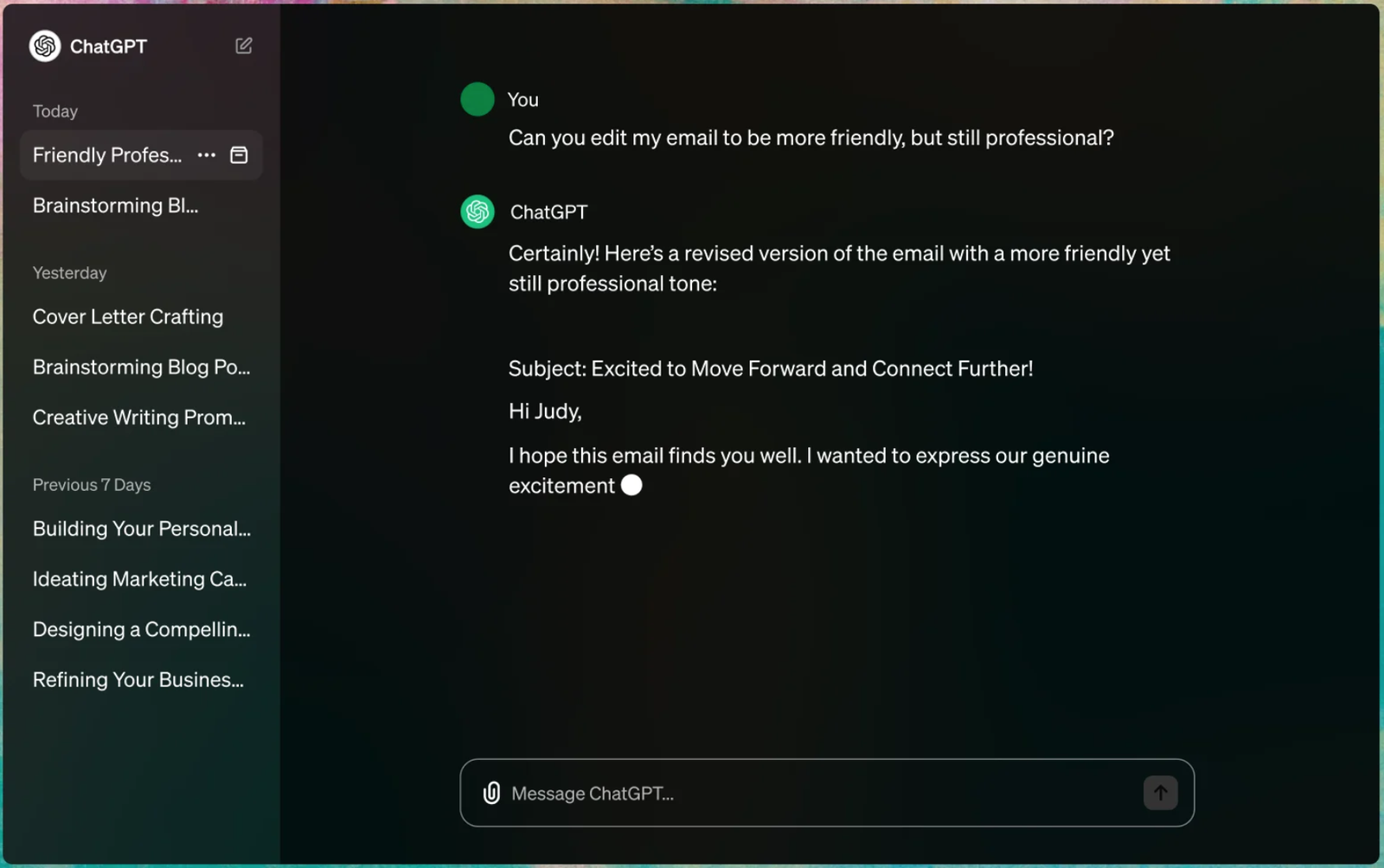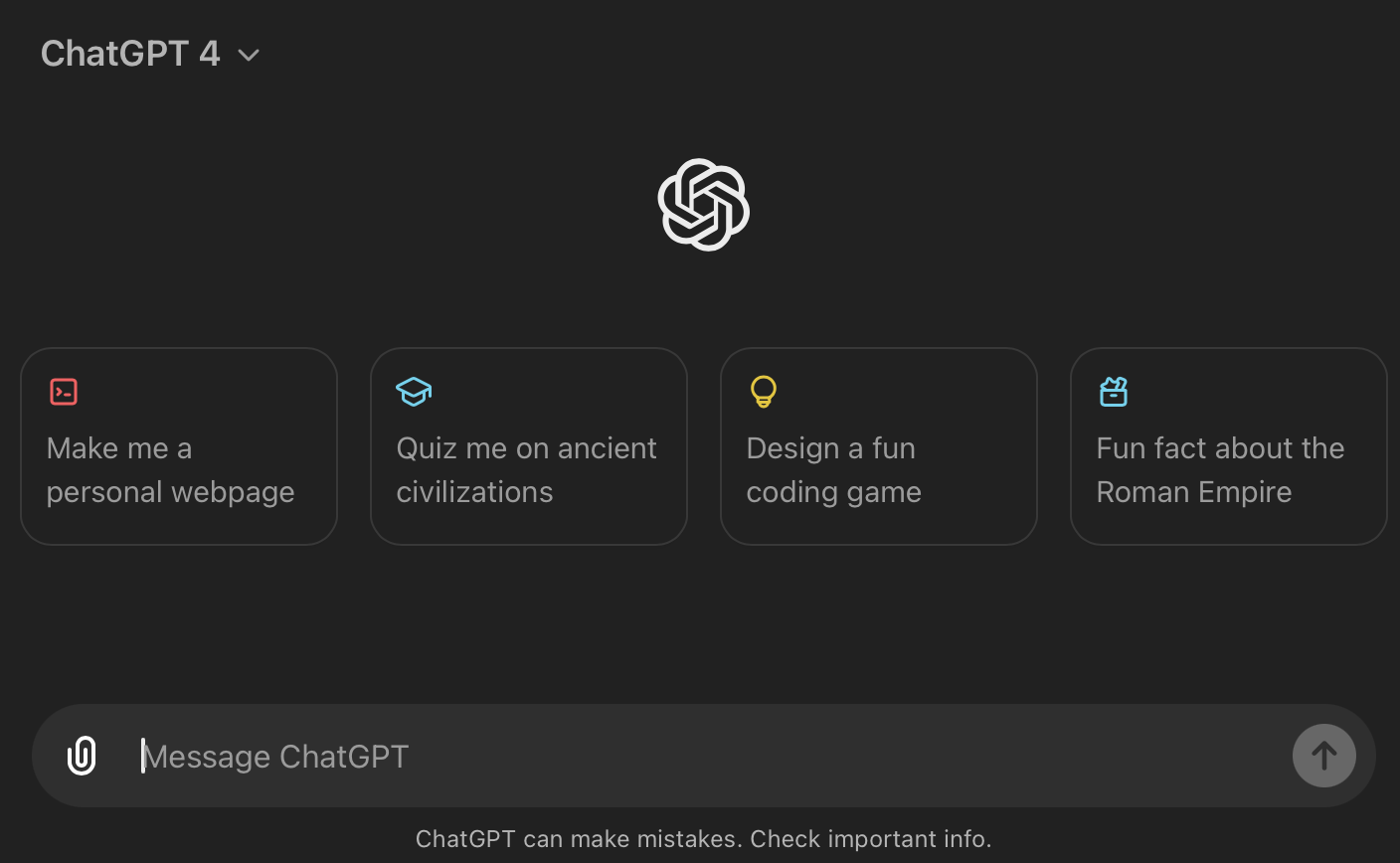Introduction to ChatGPT
ChatGPT is an advanced artificial intelligence language model developed by OpenAI, renowned for its ability to understand and generate human-like text. This AI model is designed to facilitate seamless interactions between computers and humans, making it a pivotal development in the realm of machine learning and natural language processing.
The journey of ChatGPT began with its predecessors, GPT and GPT-2, which laid the foundational framework for training algorithms on large datasets to handle complex language tasks. The introduction of GPT-3 marked a significant leap forward, enhancing the model’s ability to process and produce language with unprecedented accuracy and subtlety.
OpenAI has developed GPT-4o (omni), the latest advancement in their efforts to scale up deep learning. GPT-4, a large multimodal model capable of processing both image and text inputs to produce text outputs, achieves human-level performance on various professional and academic benchmarks despite being less capable than humans in many real-world scenarios.

For instance, it can pass a simulated bar exam with a score in the top 10% of test takers, a significant improvement over GPT-3.5, which scored in the bottom 10%. Over six months, OpenAI refined GPT-4 through an iterative alignment process, drawing on lessons from their adversarial testing program and experiences with ChatGPT. This has led to their best-ever results in terms of factuality, steerability, and adherence to operational guidelines, though the system is not yet perfect.
ChatGPT represents a critical step in the evolution of AI language models, showcasing the remarkable progress in the field. It not only embodies the culmination of years of linguistic research and advances in neural networks but also highlights the growing capabilities of AI to understand nuances and context in human communication. This model continues to influence the development of AI technologies, pushing the boundaries of what machines can achieve in natural language understanding and generation.
How ChatGPT Works
ChatGPT operates on a framework called transformers, which are designed to analyze and generate text based on the context of entire sentences or conversations. This model processes data through deep learning techniques, involving thousands of layers that interpret the subtleties of language.
The model is trained using a diverse range of internet text. By learning from a vast corpus, ChatGPT gains the ability to mimic human-like responses across various topics, thereby enhancing its conversational skills.
Key Features of ChatGPT
Contextual Understanding
One of ChatGPT’s standout features is its ability to understand and remember context within a conversation. This enables the model to generate responses that are relevant and coherent, making interactions seem more natural.
Versatile Applications
From composing emails to writing poetic verses, ChatGPT’s versatility allows it to be employed in numerous tasks that require human-like language generation, proving its utility across different domains.
Overview of OpenAI Models
The OpenAI API harnesses a variety of models, each tailored to different capabilities and offered at various price points. This diversity ensures that users can select the most suitable model for their specific needs.

Additionally, OpenAI provides the option to fine-tune these models, allowing for further customization to better align with individual use case requirements.
GPT-4o
This model stands as the flagship offering from OpenAI, providing the fastest and most cost-effective solution among the advanced models. GPT-4o is designed to deliver high performance for a broad range of tasks, making it an ideal choice for those seeking efficiency and affordability in one package.
Enhanced Functionalities:
- Versatile Interaction Methods:
Utilize ChatGPT by typing or initiating a voice conversation through the mobile app by clicking on the headphone icon. - Web Browsing Capabilities:
ChatGPT can respond to your queries by leveraging its extensive knowledge base and accessing information from the internet. - Data Analysis and Chart Creation:
You can upload a file for ChatGPT to assist in data analysis, summarization of information, or chart generation. - Image Discussions:
Either capture a new image or upload an existing one, and ChatGPT can provide insights or answer questions about it.
GPT-4 Turbo and GPT-4
These models represent the previous generation of high-intelligence offerings from OpenAI. While they are not the latest models, GPT-4 Turbo and GPT-4 still provide robust capabilities. These models are suited for applications requiring deep understanding and complex problem-solving abilities, maintaining high standards of performance.
GPT-3.5 Turbo
As a faster and less costly model, GPT-3.5 Turbo is optimized for simpler tasks that do not require the cutting-edge capabilities of the newer generations. This model is perfect for users who need quick and efficient AI performance at a lower price point, especially for tasks that are straightforward and less demanding.
Each model in the OpenAI lineup is designed to meet various user requirements, from high-speed, cost-effective solutions to high-intelligence, complex problem-solving capabilities. With the additional option of fine-tuning, users can further adapt these models to achieve the best results for their specific scenarios.
Practical Applications of ChatGPT
Real-World Integration
ChatGPT finds applications in customer service, where it can answer queries without human intervention, and in content creation, where it assists in generating written content quickly and efficiently.
Challenges and Limitations
Ethical and Technical Challenges
Despite its capabilities, ChatGPT faces challenges like managing biases that arise from its training data and ensuring privacy and security in its implementations.
Limitations in Language Processing
While highly advanced, ChatGPT occasionally misinterprets nuances or generates irrelevant responses, highlighting areas for future improvement.
The Future of ChatGPT
Advancements on the Horizon
Future developments in AI will likely focus on enhancing the model’s understanding of complex human emotions and subtleties, pushing towards more sophisticated AI-human interactions.
Expanding Roles in Society
As AI continues to evolve, ChatGPT and similar technologies are expected to play increasingly significant roles across various sectors, influencing the way we work, learn, and communicate.
ChatGPT Pricing Plans
Free Plan
Ideal for individuals just beginning to explore the capabilities of ChatGPT, the Free plan offers no cost access to essential features. Users can receive assistance with writing, problem solving, and more. This plan includes access to GPT-3.5 and limited access to the newer GPT-4o.
However, it restricts more advanced features like data analysis, file uploads, vision capabilities, web browsing, and custom GPTs. The Free plan is a great starting point for those new to AI, costing $0 per month.
Plus Plan
Designed for individuals aiming to significantly boost their productivity, the Plus plan is priced at $20 per month. Subscribers gain early access to new features and comprehensive access to both GPT-4, GPT-4o, and GPT-3.5.
This plan allows up to five times more messages for GPT-4o and includes full capabilities for data analysis, file uploads, vision, and web browsing. Additionally, it offers DALL•E image generation and the ability to create and use custom GPTs, providing a robust toolset for advanced users.
Team Plan
Tailored for dynamic teams aiming to enhance collaboration, the Team plan offers everything included in the Plus plan with additional benefits. It features higher message limits for GPT-4, GPT-4o, and tools like DALL·E, browsing, and data analysis.
Users can create and share custom GPTs within their workspace, and an admin console is provided for effective workspace management. Importantly, team data is excluded from training by default, ensuring privacy and security. Pricing is set at $25 per user per month when billed annually, or $30 per user per month when billed monthly.
Enterprise Plan
The Enterprise plan is designed for large companies seeking to scale their operations securely and efficiently. It includes everything in the Team plan plus unlimited, high-speed access to GPT-4, GPT-4o, and advanced tools like DALL·E, browsing, and data analysis.
This plan offers an expanded context window for processing longer inputs and ensures enterprise data is excluded from training, with options for custom data retention windows. Additional features include admin controls, domain verification, analytics, priority support, and ongoing account management, making it ideal for companies needing comprehensive, large-scale AI solutions.
Conclusion
This article has explored the remarkable capabilities of ChatGPT, from its underlying technology to its practical applications and future potential. As AI continues to evolve, ChatGPT remains at the forefront, shaping the future of digital interaction.
The ongoing development of AI language models like ChatGPT promises to bring even more transformative changes to numerous fields.
Read more in our Blog.

